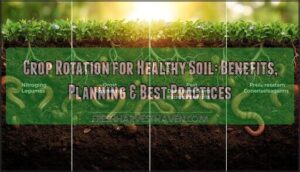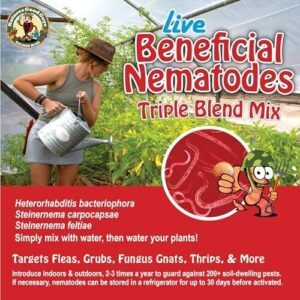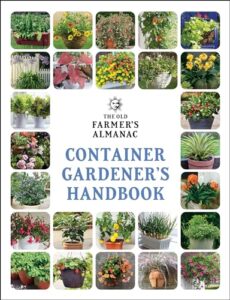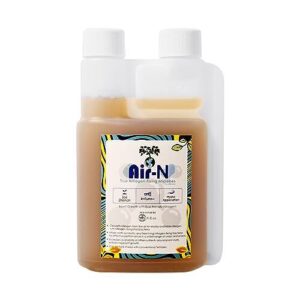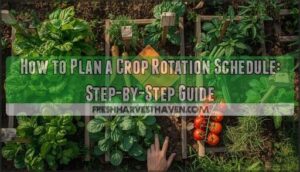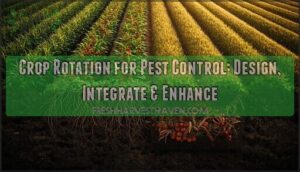This site is supported by our readers. We may earn a commission, at no cost to you, if you purchase through links.
Your soil isn’t just dirt—it’s a living ecosystem that either works for you or against you, depending on how you manage it. When you plant the same crop in the same field year after year, you’re practically serving a buffet to specialized pests while draining specific nutrients until the soil can barely sustain growth.
Crop rotation for healthy soil flips this script entirely. By alternating crops strategically, you’re building a self-sustaining system where legumes fix nitrogen, deep-rooted plants break up compaction, and diverse plantings confuse pests before they establish strongholds.
The results speak louder than theory: farms practicing rotation see microbial activity surge by over 20%, water retention improve dramatically, and chemical inputs drop by nearly a third—all while yields climb.
Table Of Contents
Key Takeaways
- Crop rotation boosts soil health by fixing up to 200 pounds of nitrogen per acre through legumes, increasing microbial activity by 21%, and raising organic carbon by 8% without synthetic inputs.
- Strategic rotation breaks pest and disease cycles naturally, cutting pesticide use by 19–31% and reducing weed density by up to 65% while delaying resistance development.
- Effective rotation planning sequences heavy feeders after nitrogen-fixing legumes and light feeders last, running in 3–4 year cycles that prevent nutrient depletion and pathogen buildup.
- Implementing rotation with cover crops and detailed record-keeping can reduce chemical fertilizer needs by 41–46% while boosting farm net income by roughly 20% in some regions.
Key Benefits of Crop Rotation for Soil Health
Crop rotation isn’t just an old farming trick—it’s one of the most effective ways to build and maintain healthy, productive soil. When you alternate your crops strategically, you reveal a range of benefits that work together to improve everything from nutrient availability to pest resistance.
Let’s look at the specific ways crop rotation strengthens your soil and fosters long-term agricultural success.
Enhancing Soil Fertility and Nutrient Cycling
By alternating crops, you utilize legume nitrogen fixation that delivers 70 to 200 pounds of nitrogen per acre annually, enriching soil fertility without synthetic inputs. Diversified rotations boost microbial biomass by 21%, enhancing nutrient cycling efficiency. You’ll also see organic carbon accumulation increase by 8%, while phosphorus cycling and potassium dynamics improve through strategic crop sequencing.
Alternating crops with legumes delivers up to 200 pounds of free nitrogen per acre while boosting soil microbes by 21% and organic carbon by 8%
This natural approach optimizes nutrient availability and maintains long-term soil health. Soil organic matter, containing 95% of soil nitrogen, greatly affects nutrient availability.
Improving Soil Structure and Water Retention
Beyond nutrient gains, you’ll notice how diverse rotations physically transform your soil. Different root systems create extensive biopore networks that boost infiltration capacity by up to 18.5%, while increasing aggregate stability by 10%. You’ll also see:
- Bulk density reductions of 2–5% in the upper soil layers
- Water capacity improvements through 8–28% gains in organic carbon
- Enhanced macroporosity supporting deeper root penetration
- Measurable increases in plant-available water during dry periods
These structural improvements directly strengthen soil health and long-term productivity. No-till practices, however, can increase soil bulk density in the topsoil.
Natural Pest and Disease Management
Rotating your crops breaks pest cycles by removing host plants and disrupting the life stages of insects, pathogens, and weeds season after season. This natural pest and disease management reduces pesticide use by 19–31%, delays resistance development, and strengthens pest control without relying on chemicals.
You’ll cut weed density by up to 65% under zero-tillage systems, while beneficial microorganisms increase disease suppression capacity by 45–56%.
Increasing Soil Organic Matter and Biodiversity
As your rotation diversifies, you’ll see soil organic matter content climb by 3.6–8.5%, especially when cover crops join the mix. This carbon sequestration builds microbial biomass, increasing bacterial communities by 20% and boosting aggregate stability by 7–9%.
The result? Ecosystem services expand by a median of 24%, supporting regenerative agriculture while enhancing biodiversity and long-term soil health without additional inputs.
Reducing Dependency on Chemical Inputs
When you integrate legumes and cover crops, you’ll cut synthetic fertilizer needs by 41–46% while maintaining high yields. Long-term rotation trials show herbicide use dropping 96–97%, slashing freshwater toxicity loads without sacrificing profitability.
These economic savings—boosting net income by roughly 20% in some regions—pair with environmental impact reductions: lower greenhouse gas emissions, improved weed control methods, and healthier soil through sustainable agriculture and integrated pest management.
How to Plan an Effective Crop Rotation
Planning a successful crop rotation starts with understanding what your crops need and how they interact with your soil. Group plants strategically, time your sequences right, and adapt your approach to your specific conditions.
Here’s how to build a rotation plan that works for your farm or garden.
Categorizing Crops by Family and Nutrient Needs
Effective plant family rotation starts with grouping your crops by botanical relatives and nutrient demands. Brassicas like cabbage and broccoli share lime needs, while solanaceous crops—tomatoes, peppers, potatoes—thrive with higher nitrogen. Understanding these relationships sharpens your crop selection and prevents soil depletion.
- Legumes fix atmospheric nitrogen, enriching soil for subsequent plantings
- Heavy feeders such as corn remove significant phosphorus and potassium
- Root depth categories help you exploit different soil layers efficiently
Weaving cover crop integration into this framework sets up stronger crop sequences.
Sequencing Heavy Feeders, Legumes, and Light Feeders
After legumes deposit nitrogen, you can place heavy feeders—corn, tomatoes, cabbages—that convert that gift into plentiful yields. Light feeders like carrots and onions follow, using residual nutrients without overtaxing the soil. This three-stage cycle maximizes nutrient availability and cuts fertilizer costs, a proven pattern backed by evidence showing legume–cereal rotations boost subsequent crop yields by roughly 36%.
| Rotation Stage | Crop Examples |
|---|---|
| 1. Legumes | Peas, beans, faba bean |
| 2. Heavy Feeders | Corn, tomatoes, cabbages |
| 3. Light Feeders | Carrots, onions, lettuce |
Including Cover Crops for Soil Enrichment
Between main plantings, cover crops work overtime to enrich your soil. Legume species like vetch and clover fix 50–200 kg of nitrogen per hectare annually through nitrogen fixation rates, while grasses and brassicas capture residual nutrients and boost water infiltration by up to 35%.
These living mulches add organic matter, improve carbon sequestration, and deliver erosion control—essential tools in sustainable agriculture that make soil health measurable and manageable.
Adapting Rotation Plans to Climate and Soil Conditions
Your growing zone isn’t just a map number—it’s your rotation blueprint. Climate-smart rotations matched to soil conditions foster resilience you can measure. Consider these soil-specific adaptations:
- Temperature adjustments: Shift sowing dates 10–20 days forward in warmer springs to capture 4–10% yield gains in temperate zones.
- Drought-tolerant crops: Integrate water-efficient species to cut irrigation demand 15–30% in semi-arid regions.
- Soil types: Diversified rotations on fine-textured soils increase organic carbon 8% over six years.
- Crop selection: Align rooting depth with soil constraints for stronger nutrient use efficiency—up to 37% improvement.
- Climate variations: Synchronize planting windows with rainfall patterns to boost water productivity 12–22%.
Considering Market Demand and Labor Availability
You can’t sell what you can’t harvest on time. Market window alignment and labor peak balance anchor smart rotation economic outcomes.
On 72% of U.S. vegetable farms, growers stagger crops to hit early or late premium pricing. Include 20–30% storage crops for year-round supply, reduce cover crop labor with mechanizable options, and let market demand guide your crop selection without compromising soil health.
Best Practices for Implementing Crop Rotation
Planning your rotation is one thing, but putting it into practice is where the real work begins. You’ll need systems in place to track what you’re planting, manage problems as they arise, and fine-tune your approach based on what actually happens in the field.
Here are three essential practices that’ll help you implement crop rotation successfully and keep your soil thriving year after year.
Creating and Maintaining Crop Rotation Records
Digital record-keeping transforms how you track crop sequences and monitor soil health over time. You’ll gain compliance benefits while capturing planting dates, harvest yields, and soil testing results with accuracy improvements that eliminate manual errors.
Historical analysis reveals patterns in your crop rotation planning, enabling better decisions for future seasons. This time efficiency lets you focus on evaluating soil health rather than paperwork, ensuring your rotation plan delivers measurable results.
Managing Weeds, Pests, and Diseases Naturally
Rotating crops naturally disrupts weed seedbank germination patterns and interrupts insect life-cycles before they can establish. Diversified sequences reduce weed density by up to 49% while cutting pest pressure without heavy herbicide use.
This biological control approach enhances disease suppression through beneficial microbes in your soil, supporting integrated pest management that targets pest cycles and disease cycles simultaneously while achieving substantial herbicide reduction.
Evaluating and Adjusting Rotation Strategies Over Time
As weed and pest cycles shift, you’ll want to keep a close eye on soil health indicators and yield trend analysis. Regular record keeping and adaptive soil testing—especially after major changes—help you spot nutrient shifts.
Linking environmental outcomes with farmer decision-making, you can assess soil health, monitor progress, and adjust your rotation strategy for lasting results.
Top 5 Products for Successful Crop Rotation
Implementing a successful crop rotation plan requires more than just knowledge—you’ll need the right tools and resources to track progress, improve soil biology, and refine nutrient cycling.
The following products support different aspects of rotation management, from record-keeping to biological soil amendments. Each offers practical value for farmers and gardeners committed to building long-term soil health.
1. Dunkin Original Medium Roast Coffee
You might wonder what coffee has to do with sustainable agriculture, but Dunkin Original Medium Roast Coffee offers a surprising lesson in market analysis for crop rotation planning. Made from 100% Arabica beans, this medium roast delivers a balanced flavor profile with roughly 152 mg of caffeine per 12-ounce serving.
Understanding consumer preferences—like the 50% market share medium roasts command—helps you align crop rotation decisions with market demand. Various brewing methods extract different nutrient levels, much like how soil structure affects nutrient availability in rotational systems.
Best For: Working adults who want a reliable, smooth medium roast coffee that’s easy to brew at home and delivers consistent café-style flavor without breaking the bank.
- Made from 100% Arabica beans with a balanced medium roast that appeals to a wide range of coffee drinkers, accounting for about 50% of market preference
- Convenient 30-ounce canister provides roughly 85 servings of ready-to-brew ground coffee with resealable packaging to keep it fresh
- Delivers solid caffeine content (around 152 mg per 12-ounce cup) and is widely available at major retailers like Walmart, Target, and Kroger
- No information about sustainability practices or eco-friendly packaging, which matters if you care about environmental impact
- The flavor may feel too mild or one-note for people who prefer bolder dark roasts or more complex single-origin coffees
- Contains caffeine naturally, so it’s not an option for anyone looking to cut back or avoid stimulants altogether
2. NaturesGoodGuys Live Beneficial Nematodes Blend
For biological pest control within a rotation system, NaturesGoodGuys Live Beneficial Nematodes Blend delivers three nematode species—Steinernema carpocapsae, S. feltiae, and Heterorhabditis bacteriophora—targeting over 200 soil-dwelling insects.
You’ll get 5 million beneficial insects per package for $17.25, covering roughly 700 square feet. Application methods include hose-end or pump sprayers in moist soil above 50°F.
These soil microbes improve soil biology without harming plants or beneficial insects. Storage viability requires refrigeration, and environmental safety is excellent—no reentry restrictions for people or pets.
Best For: Home gardeners and lawn owners dealing with grubs, fungus gnats, or other soil pests who want an organic, chemical-free solution that’s safe around kids and pets.
- Triple-species blend targets over 200 different soil pests at various depths, from surface-dwelling insects to deep grubs
- Safe for people, pets, and plants with no reentry restrictions or chemical residues
- Works naturally by releasing bacteria that kill pests within 24-72 hours, then reproduces for extended control
- Requires specific conditions to work—soil must stay moist for two weeks and temperatures need to be above 50°F
- Short shelf life means you need to refrigerate immediately and apply quickly after delivery
- Coverage is limited at 700 square feet per package, making larger lawns expensive to treat
3. The Old Farmer’s Container Handbook
The Old Farmer’s Container Handbook ($11.50, 208 pages) bridges container gardening techniques with crop rotation principles when space limits field-scale implementation. Its target audience includes urban growers rotating herbs and compact vegetables through pots to maintain soil fertility and organic matter.
You’ll find guidance on container selection, growing medium formulation, and pest control strategies that support soil health even in small spaces. The handbook’s practical approach covers plant families, nutrient management, and record-keeping—essential tools for optimizing container-based rotation sequences on patios or balconies.
Best For: Urban and small-space gardeners who want to grow vegetables, herbs, and ornamentals in containers on patios, balconies, or steps without needing a traditional garden plot.
- Covers the full process from container selection and custom soil mixes to pest control and plant care, giving you everything needed to start and maintain a container garden.
- Works for all skill levels with practical tips, plant profiles for “thriller, spiller, and filler” combinations, and record-keeping pages to track your progress.
- Affordable at $11.50 for 208 full-color pages, making it a budget-friendly reference compared to other gardening guides.
- Limited coverage of indoor plants and common houseplants, so it’s mainly focused on outdoor container gardening.
- Some readers found it smaller than expected in physical size, and not all plants are covered in detail.
- Advanced gardeners might find certain sections basic, as the content is designed to be accessible to beginners.
4. Gardening Log Book Planner
The Gardening Log Book Planner ($9.99, 169 pages) provides structured Data Tracking that aids effective crop rotation and soil health improvements. You’ll access logbook features including 100 plant log pages, monthly sowing and transplant schedules, and companion planting charts—tools that reinforce sustainable agriculture through documented crop sequences.
Planning benefits emerge when you record bed locations annually, enabling systematic movement of heavy feeders and legumes across sections. Pest monitoring pages and yield records help you correlate rotation changes with harvest outcomes, refining your farming practices season after season.
Best For: Home gardeners who want to track crop rotation, pest patterns, and yields over multiple seasons to improve their planning and soil health.
- 100 plant log pages with guided prompts help you document bed locations, planting dates, and harvest results—exactly what you need to run a proper 3-4 year crop rotation and spot pest trends.
- Monthly sowing and transplant lists plus seasonal checklists keep you on top of time-sensitive tasks so you don’t miss planting windows or succession schedules.
- Companion planting chart and measurement rule on the back cover give you quick reference tools right when you need them in the garden.
- Some users report that the paper and print quality feel cheap or hard to read, which can be frustrating when you’re trying to keep detailed records.
- The 6×9 inch size and soft cover might not hold up well to regular outdoor use or muddy hands during the growing season.
- The layout may not fit everyone’s workflow—some gardeners might find certain sections too cramped while others sit empty, and there’s no digital backup option.
5. AIR-N Nitrogen Booster Plant Growth
AIR-N Nitrogen Booster ($25.90, 8 fl.oz.) delivers microbial nitrogen fixation through Azotobacter chroococcum and Azospirillum brasilense, bacteria that convert atmospheric nitrogen into plant-available forms—similar to how legumes enrich soil fertility naturally.
You’ll see bio-stimulant effects boosting germination and root development when applying this liquid concentrate alongside your existing fertilization program. Fertilizer enhancement occurs because these organisms improve nutrient availability and nitrogen use efficiency.
Application context matters: use AIR-N as a supplement within optimized synthetic nitrogen ranges (150–200 kg N/ha) rather than a complete replacement. Product safety is established, as these free-living bacteria pose no pathogenicity concerns in agricultural settings.
Best For: Growers looking to reduce synthetic nitrogen inputs while maintaining yields by supplementing their existing fertilization program with microbial nitrogen fixation for crops like cereals and grasses.
- Contains two scientifically documented nitrogen-fixing bacteria that can contribute 20–40 kg nitrogen per hectare annually and improve nitrogen use efficiency by 10–25%
- Produces natural plant hormones (auxins, gibberellins, cytokinins) that enhance root development and nutrient absorption beyond just nitrogen supply
- Works synergistically with standard fertilizers to potentially increase yields by 5–30% in cereals while reducing environmental risks like nitrate leaching
- Functions as a supplement rather than a fertilizer replacement, so you’ll still need to maintain baseline synthetic nitrogen applications for optimal results
- Effectiveness varies significantly depending on soil conditions, crop type, and existing nitrogen levels—not a universal solution for all plants
- Limited user reviews and shipping restrictions to certain states (like Oregon) may complicate purchasing decisions and product availability
Frequently Asked Questions (FAQs)
How long should a crop rotation cycle be?
Most rotation cycles run three to four years—long enough to break pest cycles and restore soil fertility.
You’ll see better nutrient cycling and stronger disease suppression when you space the same crop family at least that far apart.
Can crop rotation work in small home gardens?
Yes, you can rotate crops even in compact spaces. Extension guides show that dividing small beds or containers by plant family and shifting groups yearly reduces disease and balances nutrients effectively in areas under 20 m².
What crops should never follow each other?
Ever wondered why your tomatoes struggled after last year’s potatoes? Solanaceae conflicts, brassica sequences, and repeated legumes share plant pathogens and pest cycles.
Your crop rotation plan must avoid continuous maize and short potato rotations across plant families.
Does crop rotation eliminate all soil diseases?
No, rotation limitations mean pathogen persistence remains an issue. Some plant pathogens survive years in soil, have wide host ranges, or affect weeds.
Integrated management combining rotation length adjustments with other tactics reduces pest and disease pressure more effectively.
How do you rotate crops in raised beds?
Picture a backyard bed that grew tomatoes last summer. This year, you plant beans there, then brassicas next season.
This simple family-based rotation planning prevents nutrient depletion, breaks pest cycles, and maintains soil health across crop sequences in sustainable farming systems.
Conclusion
Think of your farm as a relay race—each crop passes the baton, leaving the soil better prepared for what comes next. When you implement crop rotation for healthy soil, you’re not just growing plants; you’re cultivating an entire underground economy where nutrients replenish, structure strengthens, and life multiplies.
The fields that thrive tomorrow are the ones you diversify today. Your soil remembers every decision, so make rotation your legacy.
- https://pmc.ncbi.nlm.nih.gov/articles/PMC10245104/
- https://www.frontiersin.org/journals/sustainable-food-systems/articles/10.3389/fsufs.2021.767998/full
- https://www.nature.com/articles/s41467-022-32464-0
- https://eos.com/blog/crop-rotation/
- https://fwwa.org/2017/05/31/crop-rotation-systems-soil-erosion-reductions-increased-water-quality/

